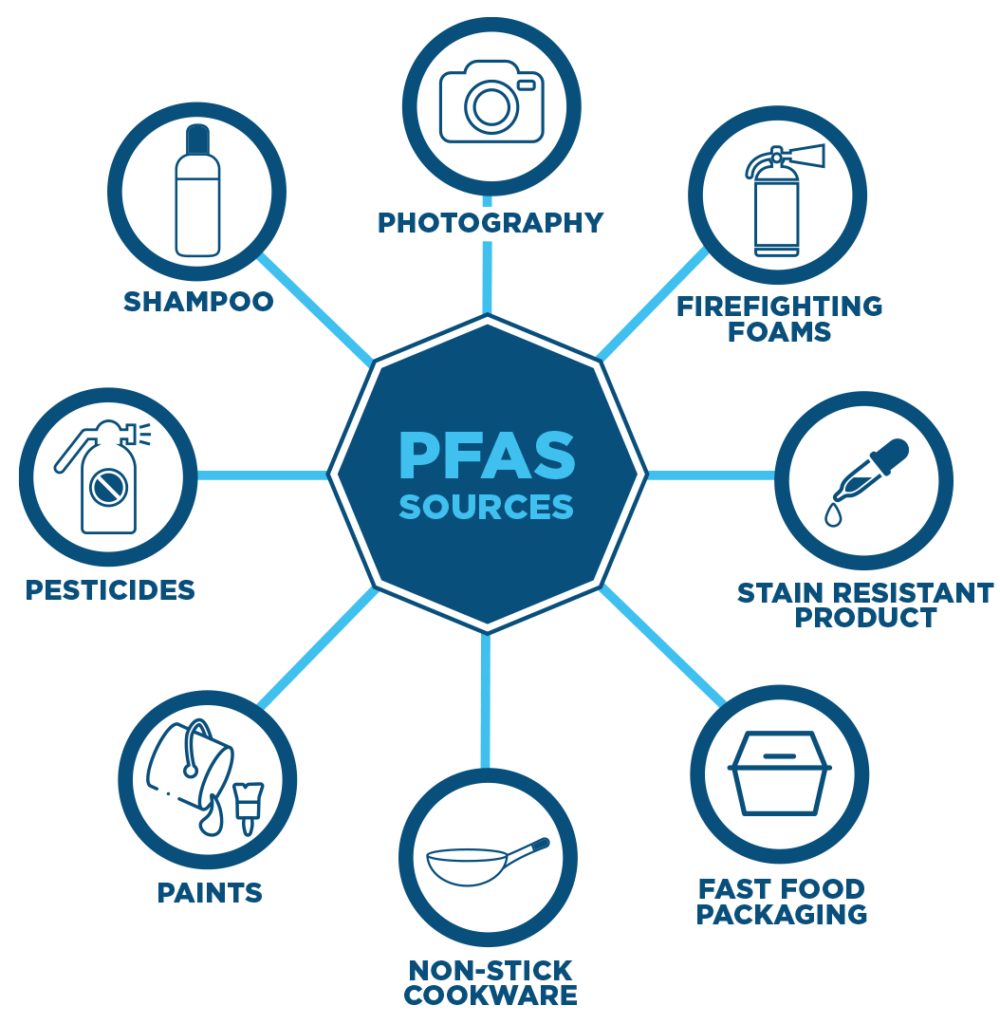9-30-21 Healthy St. Mary’s Partnership Webinar: Navy Efforts Regarding PFAS at the Naval Air Station Patuxent River and Webster Outlying Field
Per- and poly-fluoroalkyl Substances (PFAS) are a group of man-made chemicals that have been manufactured and used around the world since the 1940s. PFAS have unique properties that make them repel water and oil. Because of these properties, these chemicals have been used in protectant formulas and surface coatings of many products, such as carpets, food packaging, non-stick coatings, construction materials and firefighting foams typically used at airports and chemical facilities. Industries in the United States have phased out certain PFAS chemicals because of their associated health risks to humans.
Learn More About PFAS – EPA.GOV
Health Effects
These chemicals are very persistent in the environment and in the human body – meaning they don’t break down and can accumulate over time. If humans or animals ingest PFAS (by eating food or drinking water that contain these chemicals), they are absorbed, can build up in the body over time and potentially lead to adverse health effects.
Animal studies have shown that PFAS can cause reproductive and developmental, liver and kidney, and immunological effects. The most consistent findings from human studies are increased cholesterol levels among exposed populations, with more limited findings related to:
- infant birth weights,
- effects on the immune system,
- cancer (for PFOA), and
- thyroid hormone disruption (for PFOS)
Scientists are still learning about the health effects of exposure to per- and poly-fluoroalkyl substances. Because animals and humans process these chemicals differently, more research is needed to fully understand how PFAS impact human health.
What Can I Do?
- Avoid household goods that could be problematic. While the United States has phased out many of these chemicals, other countries have continued to use them in manufacturing goods. Try to purchase organic textiles and carpets made from natural materials. Stay away from non-stick cookware and coated food packaging. Use green cleaning products and avoid household pesticides.
- Filter your water. Activated carbon and reverse osmosis filters have been found to effectively remove PFAS contaminants (when properly maintained as detailed in product manuals).
- Stay informed. Learn about what is being done to address PFAS in the United States. In February, 2019, the EPA published their PFAS Action Plan. The EPA has also published a fact sheet summarizing key actions such as moving forward with the Maximum Contaminant Level (MCL) process, clean up strategies, monitoring, research and enforcement. The Maryland Department of Environment (MDE) also provides information on PFAS initiatives.
Additional Resources
- Restoration Advisory Board (RAB)-Pax River NAS
- EPA: PFOA, PFOS and Other PFAS
- EPA: Per- and Polyfluoroalkyl Substances (PFAS)
- MDE: Pilot PFAS Sampling Program St. Mary’s River
- MDE: Maryland and PFAS
- MDE: Fish and Shellfish Programs
- MDE: Basic Information on PFAS
- MDE: 12-18-19 Memo: Update on MDE Efforts to Address PFAS in Maryland
- EPA: PFAS Infographic (PDF)
- CDC: Per- and Polyfluorinated Substances (PFAS) Factsheet
- EPA Takes Action to Address PFAS in Drinking Water
- DOD: Addressing Perfluorooctane Sulfonate (PFOS) and Perfluorooctanoic Acid (PFOA)